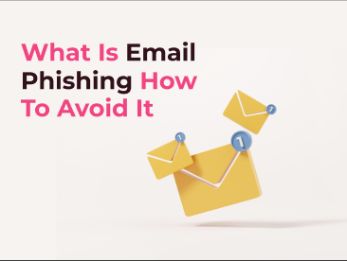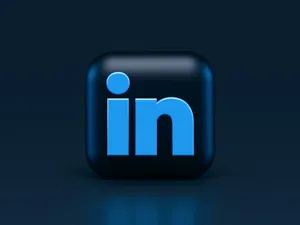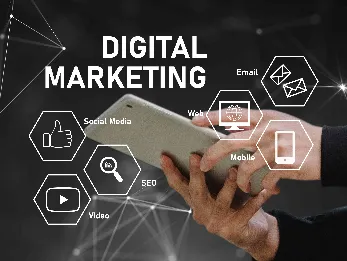Email Phishing: Everything You Need To Know About
5 mins | 25 Jan 2023

Talking about phishing is the most common thing when it comes to cyber breaches. Almost each & every employee has to deal with email on a day-to-day basis. And for a cybercriminal, all it takes is to gain unauthorized access to an individual's email to go forward with executing a scam. Also, an email provides a suitable access point to break into the company networks.
Now, when it comes to the safety of your business, safeguarding its reputation, and saving your valuable time, money & effort, it is extremely necessary to understand email phishing, and it must be addressed throughout the organization.
If you are someone who wants to learn & understand the intricate details of email phishing, then you are at the right place! In this article, we have explained email phishing in detail, which is the most common cyber-attack.
Email Phishing — What Is It?
In simple terms, email phishing can be defined as using deceptive emails to get hold of sensitive & valuable data. Also, some of these frauds or scams are generic and delivered to various recipients by cybercriminals. It is the most common type of phishing and has been the trend since the early 1990s.
Hackers or cyber criminals send these emails to many addresses they have information about! This type of email generally gives you information like there has been some issue or problem with your account, and to correct that, they will provide a link that you need to respond to instantly. However, these phishing attacks are quite easy to recognize as the email often involves some kind of language or grammatical mistakes.
Moreover, some of the emails are complicated, and it can be difficult to identify them. Examining the source of the email and the link you can be directed to for doubtful language/grammar can give you certain hints as to whether it is legitimate or not.
Phishing emails are usually sent out by cybercriminals pretending to be the right individuals or organizations. Anyone with access to an email account can craft a phishing email, which is the only reason phishing emails have become such a big scam over the years.
What Are The Objectives Of A Phishing Email?
Phishing emails are sent out to accomplish certain objectives; they are:
- Get hold of super sensitive data, for example — trade secrets.
- Collect private information such as street addresses, bank account details, etc.
- Direct you to a deceptive website.
- Contaminate your electronic devices with malware via an email attachment.
- Lure you into paying for a misleading invoice.
Truck you into making a huge payment to the fraudster's bank account.
How Are Phishing Attacks Becoming Successful Day By Day?
There are several ways through which cyber criminals lay the path for individuals to accomplish successful phishing frauds. Besides, a phishing email can come in varied forms; there are some components that every phishing scam possesses. Here are some of the elements that are present in almost every successful phishing fraud:
➤ Promising
To make it look legitimate and to get the victim to click on the email, it must seem attractive, genuine & promising enough to be clicked on.
➤ Some Sense Of Familiarity
When it comes to a user, he/she is more likely to click on the link or trust an email coming from a source they are familiar with.
➤ Timing
Phishing emails are sent out at a specific time of the day and have more chances to succeed. For example, they are sent during employees' working hours when they deal with emails.
➤ Absence Of Understanding & Knowledge
Individuals who are not aware or who don't have proper knowledge about the phishing risks are the ones who fall prey to the scams. Their lack of awareness can be a huge problem in identifying suspicious emails.
➤ Insistence
To create an emergency condition or a situation of urgency, phishing emails often try to play the card of urgency and delay the normal examination done by an individual.
➤ Dominance Or Authority
So, to make the user execute the requested activity, the email must convey its intentions with some level of dominance or influence over the user.
What Should You Do To Protect Your Business From Phishing?
It is quite certain that stopping phishing emails from hitting your inbox is not possible, but the only thing that can be done here is to reduce the possibility of a successful scam by putting up with the appropriate measures & precautions. So, the first thing to lowering the threat that is posed by phishing emails is carrying on with proper measures. With this, we mean to say that incorporating a spam filter blocks emails that come from doubtful sources. Also, by allowing security messages for the users, for instance — banners or text messages that warn the users about email phishing.
Nonetheless, phishing emails cannot be stopped even after implying certain technical measures. Now, the second thing you can do is to prevent the threat of phishing from being passed over or neglected, but it is important. This encompasses providing proper training to the organization's employees to make them understand the risk posed by phishing, how to identify the signs of email phishing, and what measures or precautions should be taken when they receive such types of emails.
Summing It Up
You know, phishing is a cost-effective way for hackers, and the low chances of getting caught make it a more attractive option to utilize by fraudsters. This is why phishing will continue to work its way as cyber criminals' main objective is to look for their profit more conveniently. However, it can be stopped by having a good understanding of it and providing proper employee training whenever necessary. One can also ensure that your organization doesn't fall into the trap easily.
Educating your employees on the subject of email security and identification process is an important step in saving your organization from such types of scams. It’s significant that users are conscious of ordinary signs of phishing, such as counterpart domains and unusual proposals, and that they take vigilance when obtaining unforeseen payment requests or attachments.
Author







